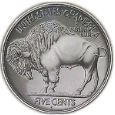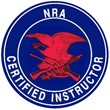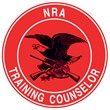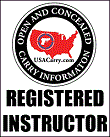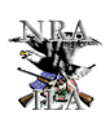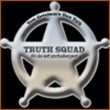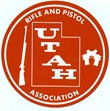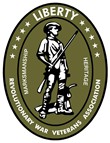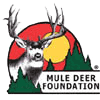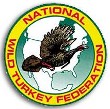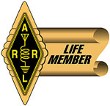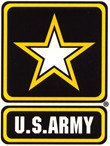| 1. Anyone who camps on cold weather must be prepared with proper clothing, sleeping gear, food, water and other equipment for the worst weather expected. Whether you are prepared is determined by the Scoutmaster or another person designated by him. Anyone not prepared may not be allowed to attend the camp out.
2. No horse play that may get you wet -- rolling in the snow, playing on ice, etc.
3. We will use the buddy system for all activities. You must stay close to your buddy at all times. Also stay close to the group. There is no need to wander off by yourself.
4. Keep close tabs on your buddy and others in the group. Watch for signs of hypothermia, frostbite, dehydration, exhaustion, etc. Talk to each other. Encourage each other to have a drink of water, eat something, slow down, etc. If you suspect a problem notify one of the leaders.
5. If you feel tired, sleepy, or cold (even just a little bit) tell someone immediately.
6. Shelters for winter camping must be 2 or more man. NO INDIVIDUAL SHELTERS.
7. Avoid having to get up in the night (see sleeping gear). If you must get up in the night, wake your shelter mate and MAKE SURE HE SITS UP. Only go a VERY SHORT DISTANCE from your shelter and only after you have dressed properly.
8. If your shelter mate wakes you in the night, SIT UP AND DO NOT LIE BACK DOWN until he returns. STAY AWAKE. If he does not return soon, get dressed and wake one of the leaders.
9. Use common sense. Ask yourself, "Is this a smart thing to do?"
CLOTHING
To keep yourself warm, remember the word COLD.
- C - keep yourself and your clothes Clean.
- O - avoid Overheating.
- L - wear clothes Loose and in Layers.
- D - keep Dry.
When you sit, kneel, or lie down, always sit, kneel, or lie on something to separate your clothing from moisture and dirt.
Over-heating can be just as dangerous as getting cold. Perspiration wets your clothing, making you more susceptible to cold later.
Wear loose fitting clothing, to optimize insulation.
Layering is the best method of dressing for winter activities. By dressing in layers, you can take off or add clothes as needed, depending on the weather and your activity. If you get warm you can take some off and if you get cold add some more clothing.
The most important thing to remember about cold weather camping is to KEEP DRY. Moisture will reduce the insulating properties of almost everything. Keep yourself dry, both from the weather and perspiration.
Remember your rain gear is water proof and will not allow perspiration to exit. During rainy weather change your clothing several times a day.
When buying clothes for cold weather remember that wool retains most of its insulation properties when wet, while cotton loose most of its. Cotton is a bad choice for winter camping since it absorbs and holds moisture and loses its insulation quality.
Thrift stores (i.e. Salvation Army, etc.) usually have second-hand all-wool military uniforms. These are excellent for winter camping.
There are expensive man-made fibers such as polypropylene that retain their insulation properties much better than wool. Ask your salesperson to explain about these if they fit your price range.
Pull trouser legs over top of shoes to keep out snow. You may want to tie or tape them to make sure of the seal.
Waterproof your leather boots with a commercial treatment such as Mink Oil. Remember that this will NOT keep your boots and feet dry if immersed in water, but does provide good protection from snow and rain.
UNDERWEAR
Start with thermal underwear. Polypropylene and wool are good choices. "Polypro" is good because it wicks moisture away from your body and wool because it is still warm when wet. Other fibers and blends are also O.K. and your choice may depend on what you can afford. If at all possible, avoid cotton because it holds moisture next to your body and is NOT warm when damp.
In very cold weather, 2 pair of long thermal pants and shirts may be appropriate. The second pair should fit loosely over the first.
SHIRTS
Several shirts and sweaters worn over each other, each one larger than the one under it, is better than one heavy coat. Though it sounds like a lot, a sweatshirt, flannel shirt, another sweatshirt, a bulky sweater and a wind breaker, along with long underwear is not a bad combination. As the temperature and your activity changes you can take off or add shirts to stay comfortable and avoid sweating.
The outer shirt or jacket should be of a material that will stop wind and shed snow. Some slick synthetics work well. If you have them, wool is excellent for the other layers.
Take a heavy coat, but wear enough layers that you should not need it.
PANTS
If you can, layer your pants also. Here again, wool is good. As with shirts the outer pair of pants should shed snow and block wind. Some types of ski pants do both well.
Coveralls and snowmobile suits are O.K., but it is more difficult to add and remove layers to regulate body temperature.
Blue jeans are not good pants for snow -- they're cotton. Snow sticks to them and they are soon wet and cold.
FOOT GEAR
You need good warm boots for winter camping. Commercial snow packs (Sorrels) are good, but, expensive. "Moon" boots work very well, but keep them away from the fire -- they melt! If your boots use them, you should have an extra pair of felt liners.
Over-size rubber overboots with the extra space taken up with foam rubber will suffice for snow boots and Scouting literature shows how to make foam rubber mukluks.
Always put on fresh socks and your boots as soon as you get out of bed. That's the only way to get those cold boots warm before your feet freeze. Trying to warm them by the fire while you stand around in stocking feet is just plain stupid!
Wiggling your toes inside your boots will help keep feet warm.
What ever you use, boots should NOT FIT TIGHT.
SOCKS
Wool and wool blends are best. Avoid cotton. Many people prefer two thin pairs to one thick pair. Take SEVERAL PAIR, more than you think you will need.
HEAD GEAR
More heat is lost through the head, face and neck than any other part of the body so a stocking cap or other warm hat with ear flaps along with a neck scarf are a must. You may want a hat that covers your face. If your feet get cold put on a stocking cap.
GLOVES OR MITTENS
Mittens are warmer than gloves but harder to work in. The best answer is to have both, if you can. Wear mittens instead of fingered gloves when you do not need independent use of your fingers. This will allow the fingers to help keep each other warm.
In either case they should be insulated and must be covered with a material that snow does not stick to.
Always put on your gloves as soon as you get out of bed. That's the only way to get those cold gloves warm before your hands become numb and useless. Keep them on all day!
Be careful around fire. Like boots, gloves and mittens are often damaged by the heat long before the scout feels the warmth of the fire.
SUNGLASSES
Take and wear dark sunglasses if snow in the forecast. The glare of the sun off the snow could lead to snow blindness. The sunglasses will reduce the glare.
SLEEPING GEAR
If you have a winter sleeping bag, great. If not, you can use two summer bags, one inside the other. Or, you can use several blankets in addition to your summer bag. Wool is best. The blankets should be folded to fit inside the bag (best) or around it.
Natural fiber sleeping bags (including down) do not maintain their insulation properties when damp. A 3 to 4 pound synthetic bag will take care of most of your needs.
A mummy style bag is warmer than a rectangular, as there is less space for your body to heat. Also, most mummy bags have a hood to help protect your head.
If you only have a rectangular sleeping bag, bring an extra blanket to pack around your shoulders in the opening to keep air from getting in.
Scouting literature also shows how to make foam rubber sleeping systems.
Putting your head under the covers will increase the humidity in the bag that will reduce the insulation properties of the bag.
Air out your sleeping bag and tent, when weather permits. Perspiration and breath condense in the tent at night and the water will reduce insulating properties of your bag.
Hang your sleeping bag up or just lay it out, between trips, so the filling will not compress and lose its insulating properties.
Whatever you sleep in, you need to be insulated from the ground or snow. A good rule of thumb is that you want 2 to 3 times the insulation below you as you have over you. A closed cell foam pad (usually blue, about $6) is essential to get you away from the cold snow and ground. Open cell foam (the familiar old foam rubber) also makes good insulation, but absorbs moisture.
Use a ground cloth to keep ground moisture from your bag. Your body will warm up snow and frozen ground to a point were moisture can become a serious problem. A plastic sheet or tarp works best. Plastic trash bags will work and if they tear trying to get them up -- no big deal.
Space blankets make good wind shields only. The metallic properties take over the insulation properties in cold weather and become cold conductors. If used as a ground cloth, they will not reflect the body heat. Instead it will conduct the cold from the ground to your body.
Don't use an air mattress or cot during the winter. Cold air will be above and below you if you do.
Respect for nature and BSA's low impact camping policy discourages using tree boughs for bedding.
SLEEPING ATTIRE
The ideal situation is to have a sleeping system that is warm enough that you can sleep naked. Since this is not the case for most of us it is necessary to bring sufficient clothing (pajamas, long underwear, sweats, etc.) to sleep warm. Don't forget socks. NEVER WEAR ANYTHING TO BED YOU HAVE WORN DURING THE DAY OR PLAN TO WEAR THE NEXT DAY. This is so you go to bed as dry as possible (no perspiration in your clothes) and start the next day dry also.
If your sleeping bag does not have a hood, you need a hat that is comfortable to sleep in. Wear a stocking cap to bed in order to reduce heat loss or wear a loose fitting hooded pull over type sweatshirt to sleep in. Here again, it should be one you have not used during the day.
Remove the clothes you are wearing before bedding down, they are damp with perspiration. Put on dry clothing or pajamas, if desired.
Before you get out of bed bring the clothes you plan to wear inside your bag and warm them up some before dressing.
OTHER ITEMS
Exercise before bedding down to increase body heat. This will help to warm your bag quicker. Be careful not to start perspiring.
It is never fun to wake up in the night having to go to the bathroom, especially when it is 10 below. As much as possible take care of this before you go to bed. If you do have to urinate in the night, it is possible to do this without having to get out of your sleeping bag. If you are VERY CAREFUL you can use a plastic bottle with a tight lid, a zip lock plastic bag or even a commercial urinal. Remember to empty the bottle away from the camp in the morning.
It is a good idea to keep warm drinks available in a water-tight bottle or canteen. If you are sure the bottle is water-tight, fill it with hot water (not boiling) and keep it in your sleeping bag to keep it and you warm. If you wake up in the night, it may be because you started to chill do to lack of energy in your body or dehydration. A warm drink will taste mighty good.
FOOD AND COOKING GEAR
You may have heard the term KISMIF as Keep It Simple, Make It Fun. In winter camping it stands for Keep It Simple, Make It Filling. Your food should require little or no preparation and be filling and high energy. Some experts recommend spicy foods as they dilate the circulatory system, keeping the body warmer. However, if you are not used to spicy foods, stick with foods you are used to on winter outings. Winter camping can stress your system to a certain extent and there is no need to stress it more with spicy foods.
On short term winter camp outs, don't worry about excellent nutrition. There is no need to have fresh fruits and vegetables etc. Instead, plan instant, high energy foods. Instant oatmeal, cream of wheat, etc., hot Tang and cocoa make a good breakfast. Trail mix, dried fruit, jerky, and granola bars are OK for lunch. Soup (especially with noodles or rice), instant potatoes with butter, macaroni with cheese, etc. are good for dinner along with hot Jell-O and cocoa and tea.
Fats and sugars are quick energy sources. However, high-sugar foods such as candy are a bad idea for camping -- especially winter camping. Sugar gives a quick shot of sugar, but later the body goes through a blood-sugar low. These blood-sugar cycles can increase chances of hypothermia. Complex carbohydrates (starches) such a potatoes, rice, and pasta are better, longer term energy sources. Proteins (meats) are generally not considered energy sources even though they do provide energy over the long run.
Drink at least 2 quarts of fluids per day in addition to what you drink at meals. Eating ice or snow can reduce your body temperature and it is not pure. Snow and ice can be used for drinking water but only after boiling.
Before going to bed pour enough water for breakfast into a pot. It is easier to heat the pot than a plastic water can.
COOKING EQUIPMENT
It takes longer to cook food in cold weather, so plan accordingly.
Cooking should involve little more than heating water, so equipment can be simple. Small pots and personal mess kits should be all that is needed. Foil dinners are excellent. Make them at home while your fingers are warm. Cook them on hot coals, eat, forget about washing dishes.
Many things are hard to prepare in freezing weather. Prepare them at home so all you need to do is cook. It's hart to bake biscuits when the water freezes faster than you can stir it into the mix.
FIRES
Building a fire in 6 feet of snow can be a problem. Even if you dig down to bare soil, a fire can result in a big mud puddle. For best results, you need a metal fire pan such as an old metal garbage can lid. Elevate it on rocks or bricks to avoid melting the snow. Otherwise, your fire will slowly sink out of sight.
If you need a fire to keep you warm you are not dressed properly. If the heat can get to your body, so can the cold. The fire will melt snow into your clothing, only getting you wet -- not warm.
Don't use a fire to keep you warm -- it won't work! The best ways to stay warm are proper clothing, keeping dry, and keeping active. Winter campers who huddle around the fire invariably have cold feet and burned or melted clothing.
If you feel cold gather some wood or do some other type of work. Activity (i.e. working, sledding, skiing, snowshoeing) is the ONLY way to get warm and stay warm on winter campouts.
Gather your wood for the morning fire in the evening so that you will be able to start the fire when you get up. Gather twice as much fuel as you think you'll need for fires. Be careful in selecting the wood you gather. Live trees are difficult to identify when the leaves are gone for the winter. Never injure a live tree unless you are in danger.
Dead twigs on the lower portion of evergreen trees makes excellent tinder. Birch bark also works very well. You may want to carry tinder or fire-starters from home if you expect it to be hard to find in snow or wet conditions.
Carry extra matches because the more you need a fire to warm up the less likely you will be able to start one easily. Keep your matches in a metal match safe as plastic can freeze and break if dropped.
STOVES
Campfires are often not practical for winter cooking. Chemical stoves are the answer. Remember, compressed gas stoves lose efficiency and may quit working at all in lower elevations and colder weather.
SHELTER
If there is little or no snow, tents are the shelter of choice. The "arctic" and "four-season" type tents are nice for winter camping but are usually expensive and often hard to set up. Summer tents work OK, especially the dome type. Tents which require stakes can be more difficult to setup.
Build a wind break outside your tent by piling up snow or leaves to a height sufficient to protect you when laying down.
In very cold situations it is best to triple up in a tent to allow for more body heat in the tent.
If the snow is deep enough and time permits then snow caves or trenches are an excellent alternative to tents. They are warmer, if constructed right, and just more fun and rewarding. Care must be taken in constructing snow shelters to stay as dry as possible and avoid over exertion (perspiring).
Heaters inside your shelter can lead to carbon monoxide poisoning. No open flames (candles, matches, etc.) inside the tents!
ODDS AND ENDS
Always review the equipment checklists in your Scout Handbook to ensure you and your patrol come on each campout fully prepared.
Use the buddy system to check each other for cold weather health problems. Notify the adult leadership if symptoms do occur.
If at night you get cold, let the adult leadership know so action can be taken before injury from cold weather health problems occur. In other words it's better to be kidded about forgetting your sleeping bag than risking hypothermia.
Learn to recognize and treat cold weather health problems. These include frostbite, hypothermia, dehydration, chilblains, trench foot, snow blindness and carbon monoxide poisoning.
Carry extra plastic bags in cold weather. They can be used as personal wind shields and ponchos by slitting a hole in the top for your head to go through.
Flashlight batteries are effected by cold. You can revive a dead battery by warming it up near the fire. Experienced winter campers keep their flashlight and spare batteries inside their clothing to keep them warm.
Back to Top
|
